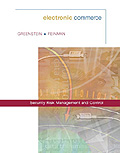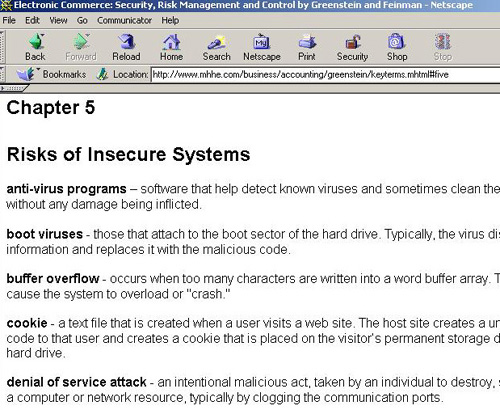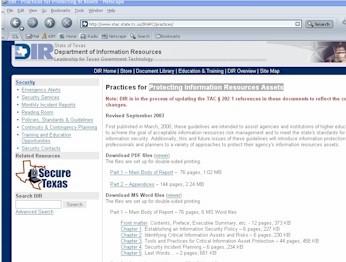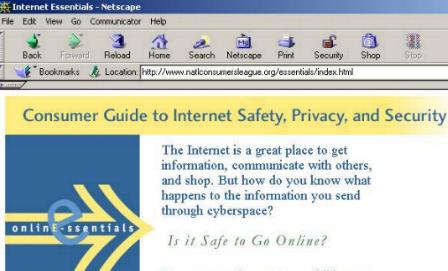Cybersecurity
- fundamentals
- definitions of a disaster
- Risk, Threat, Vulnerability explained
see also
witiger.com/ecommerce/RiskAndThreatIntroTypesOfAttacks.htm
witiger.com/ecommerce/RiskAndThreatIntro-RTVC.htm

| RISKS
and THREATS for I.T.
Cybersecurity - fundamentals - definitions of a disaster - Risk, Threat, Vulnerability explained see also witiger.com/ecommerce/RiskAndThreatIntroTypesOfAttacks.htm witiger.com/ecommerce/RiskAndThreatIntro-RTVC.htm |
 |
| . | This page
used in the following courses taught by Prof. Richardson
.
|
| LEARNING OBJECTIVES | . |
|
 |
Q.
Why is security so important in the age of the internet and computers?
A. Answer - magnitude
"A simple error in configuring a commerce site's server can lead to the compromise of thousands of credit card numbers". |
 |
Threat
Modelling and Risk Assessment
- understanding that vulnerability can exist in many forms In Schneier's books he often uses silly examples to explain scenarios and processes and several years ago he described a situation of how to steal pancakes -which was silly, but provided an excellent way of explaining how vulnerability can exist in many ways - additionally, it serves to explain that sometimes you can steal something of value without having anything to do with the transcation part of taking the money. Here is the pancake story repeated below. |
 |
"I
find that the best security analysts are people who go through life finding
the limitations of systems; they can’t help it. They can’t walk into a
polling place without thinking about the security measures and figuring
out ways that they can vote twice. They can’t use a telephone calling card
without thinking about the possible anti-fraud mechanisms and how to get
around them. These people don’t necessarily act on these thoughts--just
because they found the blind spot in the store’s video surveillance system
doesn’t mean they start shoplifting--but they can’t help looking."
"Threat modeling is a lot like this, and the only way to learn it is to do it. So let’s start by stealing some pancakes."
"There are probably even more possibilities, but you get the idea. Looking at this list, most of the attacks have nothing to do with the point where money changes hands. This is interesting, because it means that securing the payment system does not prevent illicit pancake stealing." permission to quote Bruce Schneier and to quote from his book dealt with in emails June 9th, 2006. Copies of emails kept in the permissions binder. |
 |
vulnerability
can exist in many forms
One of the purposes of recounting Schneier's pancake stealing story is to illustrate that one of the best ways to approach security is to use the powers of an overactive imagination to conceive of as many different weird possibilities that could happen. So one of the things I'm trying to do in this unit is give students a very long list of all the possible risk and threat situations that can possibly happen, and discuss these, so that by being aware of such circumstances, you may be better prepared to address them if the threat develops into an immediate risk. If you can develop countermeasures and contingencies to protect against most of these possible threats then it is unlikely you can be "surprised" by something that happens in the real world. |
| Security
is not always symmetrical |
, |
|
| What
is a Disaster - definitions |
, | "A
serious disruption of the functioning of a community or a society causing
widespread human, material, economic or environmental losses which exceed
the ability of the affected community or society to cope using its own
resources."
|
| Chpt 5
1st Edition 
Chpt 7
|
"Electronic
Commerce":
Greenstein & Feinman, (1st Edition) Chpt 5 The Risks of Insecure Systems Greenstein & Vasarhelyi, (2nd Edition) Chpt 7 The Risks of Insecure Systems the powerpoints for Chpt
5 (1st Ed) can be obtained from
Page 133 Greenstein Text
- 1st Edition
Before you begin reading Chapter 5 (7) in the Greenstein book, it would be a good idea to go to the website for the book and scan through the online list of "Key Terms" |
| clicking on the screen capture to the right will take you directly to this "glossary" |  |
| What
is a Risk - definitions |
, | "The
probability of harmful consequences, or expected losses (deaths, injuries,
property, livelihoods, economic activity disrupted or environment damaged)
resulting from interactions between natural or human-induced hazards and
vulnerable conditions."
"The potential danger that
threatens to harm or destroy an object, event, or person."
|
| Chpt
5
1st Edition 
Chpt 7
|
Overview of
Risks Associated with Internet Transactions
risks associated with transactions between business partners risks associated with confidentially-maintained archival, master file and reference data risks associated with viruses and malicious code overflows - see our unit www.witiger.com/ecommerce/viruses.htm buffer overflows |

|
Principles
of Information Security
by Michael Whitman and Herbert Mattord Chpt 2 The Need for Security
A summary of the Threats described in Chpt 2 is listed below Five groups of "real and present" danger
|
 |
Principles
of Information Security
by Michael Whitman and Herbert Mattord Chpt 2 The Need for Security
|

Chpt 3 Types of
- Frauds |
|
 |
State
of Texas
Department of Information Resources Practices
for Protecting Information Resources Assets
|
| TEXAS
"guidelines are intended to assist agencies and institutions of higher education to achieve the goal of acceptable information resources risk management" |
Part
1 – Main Body of Report – 76 pages, 6 MS Word files
Chapter 1. Establishing an Information Security Policy
Part 2 – Appendices – 144 pages, 22 MS Word files
Appendix A-1. Bibliography
|

permission to quote Bruce
Schneier and to quote from his book dealt with in emails June 9th, 2006.
Copies of emails kept in the permissions binder.
|
|
CONTACT I MAIN PAGE I NEWS GALLERY I E-BIZ SHORTCUTS I INT'L BIZ SHORTCUTS I MKTG&BUSINESS SHORTCUTS I TEACHING SCHEDULE |
| . | |
| MISTAKES ITEXTS USED I IMAGES I RANK IDISCLAIMER I STUDENT CONTRIBUTORS I FORMER STUDENTS I | |
| . |